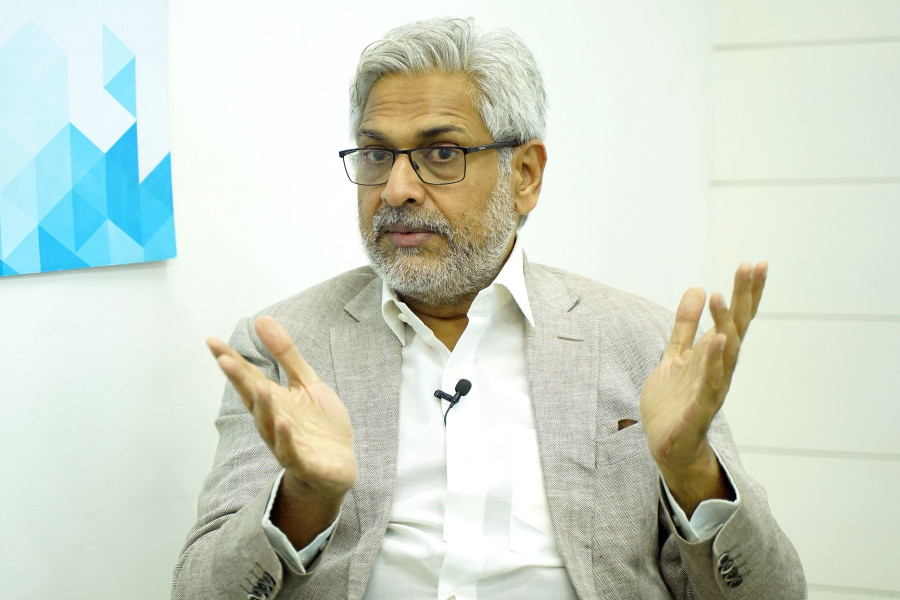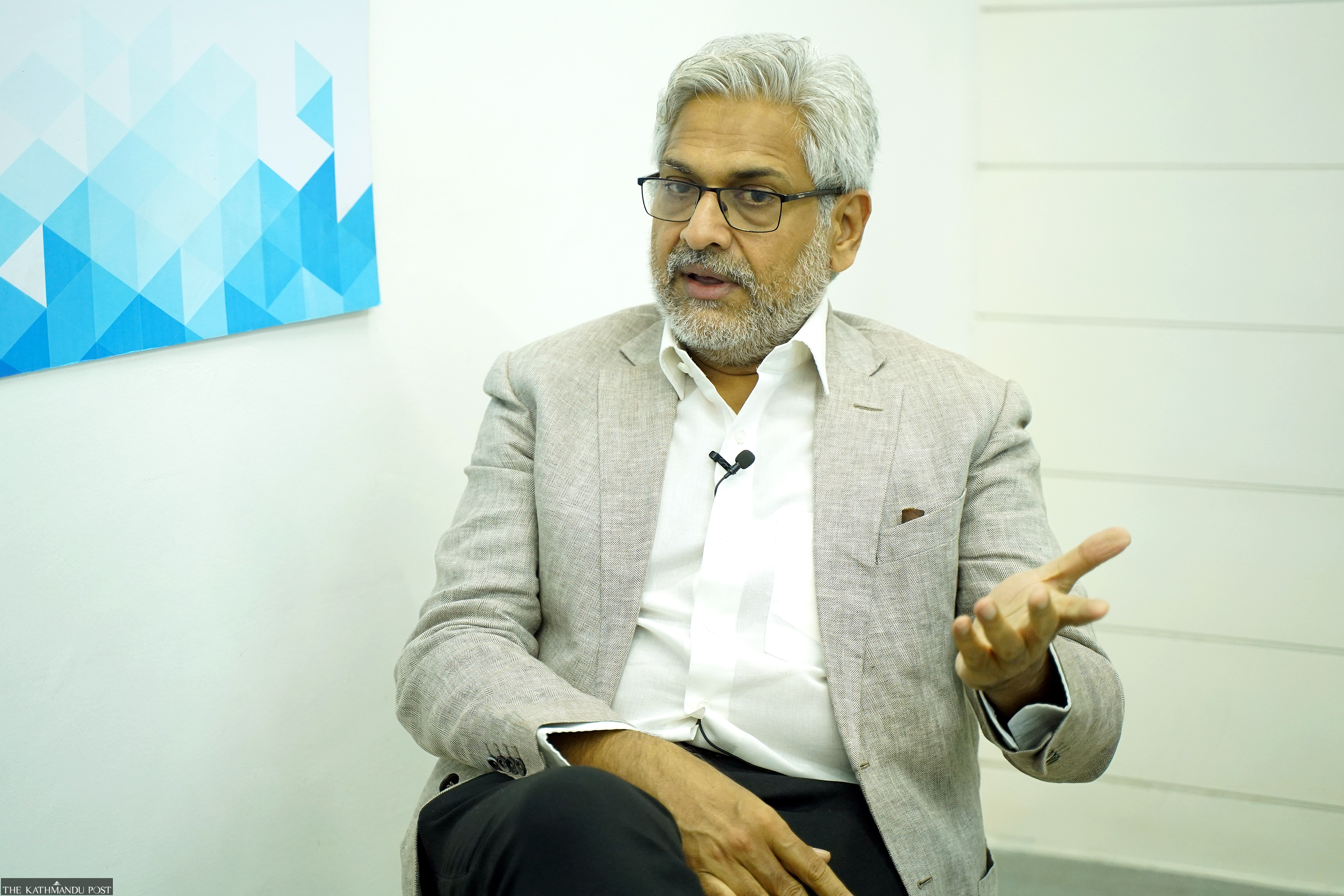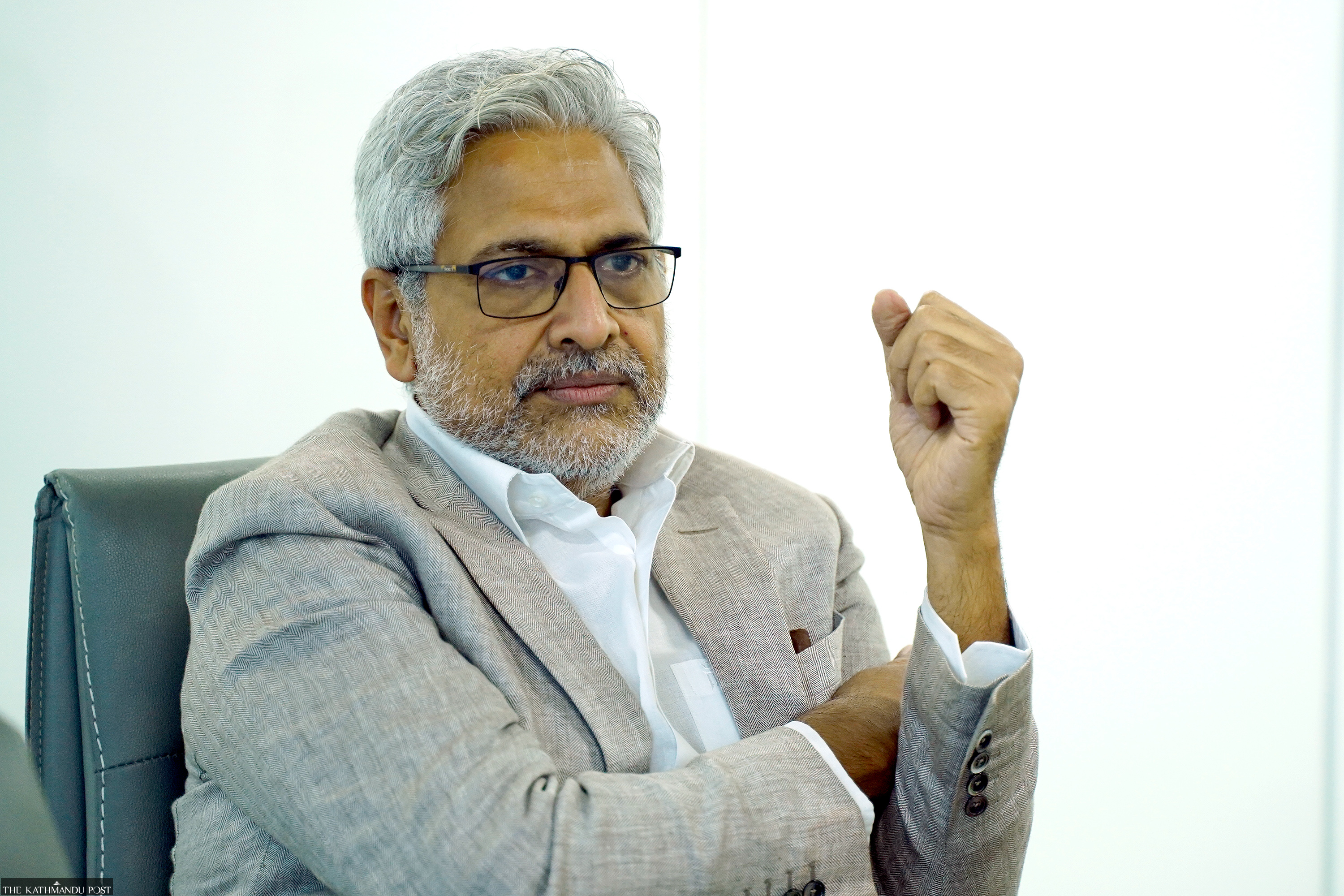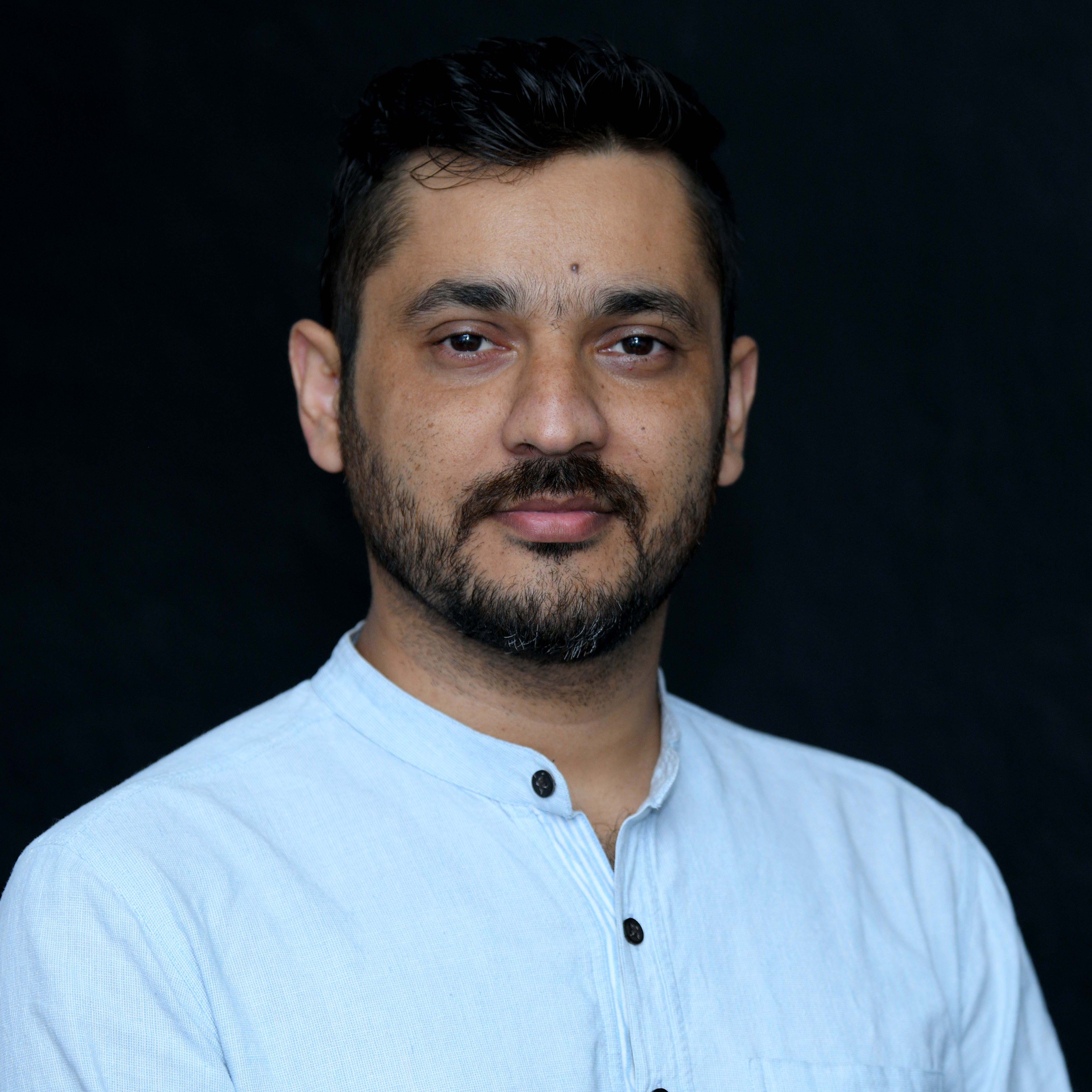Interviews
‘Nepal is the most open society in South Asia today’
Siddharth Varadarajan, founding editor of The Wire, on the challenges of running a public-spirited independent media house in an increasingly hostile political environment.
Dinesh Kafle & Suresh Raj Neupane
Siddharth Varadarajan is the founding editor of The Wire, a New Delhi-based online news portal. Besides lawsuits worth millions of dollars, Varadarajan and his colleagues have faced the wrath of the Indian government, corporates and right-wing forces for reporting on the corporate-political nexus, communalism and democratic backsliding in India. In a recent conversation with the Post’s Dinesh Kafle and Suresh Raj Neupane, Varadarajan spoke about the challenges of running a public-spirited independent media house in an increasingly hostile political environment. Excerpts:
At the Himal Media Mela in Kathmandu recently, you spoke about nurturing Nepal as a common South Asian centre for open debates on democracy and press freedom. How is Kathmandu different from other South Asian capital cities, say, New Delhi, Colombo or Islamabad?
Without a doubt, Nepal is the most open society in South Asia today. And being open means journalists or writers, artists, or human rights defenders from South Asia being able to meet each other and discuss common concerns. Nepal is the only place in South Asia where it is quite easy to meet and speak without worry. And it’s not a surprise that Nepal is also the headquarters of SAARC.
And I think that if any country in South Asia has a truly South Asian vision and identity, it’s Nepal. So for all these reasons, what you have developed here is precious. And this needs to be preserved and deepened to preserve the spirit of a free-flowing conversation between people from different countries.
It’s impossible to do this in New Delhi or any Indian city because Pakistani participants wouldn’t get visas. And in any case, the government of India’s attitude to conferences on topics they deem politically sensitive is rather restrictive. So they would insist that all participants must travel on a conference visa. And such a visa would be granted only if the Home Ministry were to give political clearance to the conference. India has gradually been shutting its doors to academic and other interactions. That way, Nepal is very well placed.
India used to be considered a model democracy worthy of emulation in South Asia. What has led to the decline in India's democratic credentials in the past decade or so?
The way in which the government has gone about trying to dominate all the institutions that were meant to provide checks and balances in the exercise of power has undermined democracy. So in the original conception, you had the legislature, judiciary, and executive as distinct branches of the Indian state, and each had its own prerogatives and responsibilities. Today, the executive looms as all-powerful. The legislature has not performed the role that it's meant to; there are no debates in parliament the way there used to be; draft laws are not scrutinised closely by standing committees. When it comes to the judiciary, a lot of pressure is being put by the government. You see this most openly in the question of judicial appointments, even though the law clearly says that the collegium of senior judges selects judges.
There is an attempt to put pressure on the judiciary and to squeeze the media, academia and all sectors of society which serve as venues for debate, discussion, and questioning. The attitude of Indian Prime Minister Narendra Modi and the Bharatiya Janata Party towards dissent and criticism is to treat everything as an expression of enmity and to believe that anybody critical of them is working on behalf of either the opposition or some anti-national force. This has proved toxic for democracy in India. If you shut down the possibility of debate and discussion, questioning and disagreement, there is no scope for democracy to survive. There will be enormous pressure for people to bottle their feelings. And that is the route to dictatorship, quite frankly.
Is this decline of democracy going to be a permanent feature in India, or will it soon change?
The atmosphere is rather claustrophobic, and people are unwilling to be openly critical as they fear retribution. I'm afraid we still have some distance to go. It's not as if people are meekly putting up with this; there is pushback. As in Nepal, people in India are also aware of their rights and believe in asserting them. We saw the farmers mount a lengthy protest against the government's farm laws despite repression being unleashed against them. Likewise, you have different sectors of society, such as the young women and men wrestlers wanting a man accused of sexual harassment to be investigated. They had to go on indefinite sit-in and move the Supreme Court. Only after the court intervened did the police register a case. The accused is an influential BJP MP because the party believes he commands support for them in a certain region of Uttar Pradesh. But that hasn't deterred the wrestlers. And people have come out in their support. So, things are bad and will likely worsen. But I think this is also triggering a pushback from different sections of society who say enough is enough and that things will only get worse unless we take a stand.
Former Jammu & Kashmir Governor Satya Pal Malik recently pointed out Narendra Modi’s failures in the 2019 Pulwama terrorist attack. Do you see more people coming out and speaking against Modi in the future?
Malik said many things that were unpleasant for Modi to hear. It took courage on his part to say that. The Home Minister of India, Amit Shah, wrongly accused Malik of developing a conscience only after he retired as governor. This is not true because even when he was governor and had more at stake, he spoke out and was critical of the government. It's just that the media didn't pay attention. But what he has said now, particularly about how he was asked to keep quiet about the lapses that led to the Pulwama terrorist attack, has struck a chord with people. He's also got considerable public support. The farmers of Haryana came out and felicitated him and pledged to stand by him. And I'm sure that both his decision to speak boldly and the reception that he is getting will encourage people to speak out.

So I do see, between now and the next general election, Modi and the BJP facing opposition from the people. People will be more willing to speak despite the risks, saying, “Look, the water has gone above our heads. If we don't speak up now, we may never get the chance”.
There is now a global trend of discrediting media, often by the state, political parties and corporate groups, among others. In such a scenario, how can the media continue to uphold democratic ideals and be the voice of the people?
The media has to pay attention to its own credibility and reputation. It has to have a relationship of trust with readers and viewers. They will only be able to be in that position if they are doing their job independently and honestly. The public in India, at least, is disenchanted with big sections of the media because they see the media as simply functioning as the mouthpiece of the government—as what is disparagingly called the “godi media”. They seem to believe that it is the high point of journalism to carry the government's statements and to fight the government's battles, and to run down critics of the government. The public sees through this and understands this. This is why, over the last five or 10 years, there has been a rise of alternate media in the most pronounced fashion on YouTube. The Wire is one of them, with about 4.5 million subscribers and clocking 20-25 million views a month.
Look at somebody like Ravish Kumar, a mainstay of NDTV India, who left the television once it was bought over by the Adani Group and started his own YouTube channel. He has gained more than 5.5 million subscribers, and every video he makes is watched by millions. If you look at the data for the YouTube views of the "godi" channels, their aggregate views may be as high as 200 million views a month. But that is on the basis of putting out 5,000 or 6,000 videos. But Ravish and we at The Wire put out around 30 or 40 videos monthly. People are recognising the problem with the so-called legacy media, about the fact that they are compromised and are pandering to the government. It's not that the public thinks of the media as being pro- or anti-government, but they want honest reporting. If the farmers are campaigning and agitating about the farm laws, they expect to see in the media an honest account. But if their protest is going to be reduced to a report about a traffic jam, they see through this.
The public has a way of discerning where the media is going wrong. A media house that does its job fearlessly, independently, and responsibly will win the public's trust, no matter what the government or corporate sector may say or what kind of pressures are put on them. If your readers and viewers are behind you, and especially if their support extends to providing financial support, then even with the most hostile government, you will still survive and live to fight another day.
Let's talk about the dynamics of finances and editorial independence in newsrooms. In legacy media today, we do not have much editorial independence due to corporate interests. Independent media ensures editorial independence, but they find it hard to sustain financially. How do we negotiate this disparity?
Historically, the investor is the weakest link in the battle to defend media freedom because when the chips are down, he is the person who can be easily threatened and browbeaten. The investor then conveys that pressure to his editorial team, basically killing any journalism that needs to be done. The digital platforms are smaller media, some of which are non-profit, like The Wire. Their investors have put in a limited amount of money and are therefore able to be bolder. So the fact that the digital portals are small also means that they are nimble. Of course, financially, they are constrained, so they can never generate the kind of output that legacy media is capable of. At the best of times, The Wire wouldn't be able to publish more than 40 stories a day. And many platforms publish even less, whereas newspapers put out hundreds of stories a day. But that doesn't matter. The fact is that in journalism, sometimes, less is more. So we are able to go more in-depth. And because we are not vulnerable in the way the legacy media is, we are able to be bolder in what we cover.
Look at the Adani Group case, for example, after the Hindenburg report [which alleged that the Adani Group was involved in stock manipulation, accounting fraud and corporate governance lapses.]. The large and legacy media houses had the resources, both financial and journalistic, to pursue the Hindenburg leads and take the story further, but they chose not to. And the task of doing the work fell on smaller platforms. Legacy media has kept off the story, which is a pity because if there was ever a business story that needed to be investigated, it is the whole Adani story.
Adani is a formidable opponent at the best of times, and given the alliance between Adani and Modi, that becomes politically even more risky. So I wasn't surprised when the big proprietors kept off. And so you had hardly any studio discussions. Indian news television revolves around these very fierce gladiatorial debates every evening, but Adani was one topic that all these guys kept off, for obvious reasons. Because you couldn't have covered that story without having some guests who were going to educate the viewers about what this is all about. And that clearly was not something that the BJP government would have tolerated.
Social media has now become a default tool for disseminating information and misinformation. How do you think legacy media should redefine its role when the audience consumes more social media content than ever?
Social media is a platform for dissemination of all kinds of content. Smaller or newer websites can get a leg up quickly because they face zero distribution costs and can disseminate their content through Twitter, Instagram or Facebook easily, quickly and cheaply. Legacy media has also taken to highly effective use of social media, but it's not just the media players that are doing it. We know that social media is gamed very comprehensively by political parties and others interested in spreading misleading, skewed, or even fake information. That said, the benefits of social media dissemination still outweigh the costs. I fear that having used social media to spread disinformation and found that it produces only limited results, the authorities in India and many other countries are looking for other means of putting pressure on social media intermediaries to stop disseminating authentic media information.
I think the Modi government's information technology rules are aimed at doing this—sending a message to Twitter that it would hold the social media company legally liable if it disseminates news that the government declares fake. This approach is aimed at making it harder for independent media to harvest the potential benefits of social media and reach a wider audience. But who's ever heard of a country which calls itself a democracy, where the government declares something fake and then everybody has to delete it? There's no argument, no discussion.
Twitter, under Elon Musk, seems to be playing to the tunes of the government.
Let's rewind to January this year when the BBC put out a documentary on the role of Narendra Modi during the 2002 anti-Muslim violence in Gujarat. The government didn't like the documentary, but they didn't ban it as they could have run into legal difficulties. However, they issued a direction to Twitter and to YouTube to delete this. And, even though there was no legal reason why they should have done this, Twitter and YouTube were very quick to comply. We found this a bit surprising and alarming. The speed with which they took that down is a wake-up call because that means you should never be in a situation where, as a media platform, you are dependent on YouTube or Twitter to reach your primary audience. You have to have multiple methods of reaching out. If you are overly dependent on any one method of dissemination, that becomes a point of vulnerability for you. Independent media need to find ways to directly connect with our audiences, whether through newsletters or events or other methods, so that third-party reliance is not as crucial as it is today.
There are serious concerns about media content these days, including fact-checking issues. The Wire is one of the few media institutions in South Asia to have appointed a public editor. How helpful has this been for The Wire? The Wire has also come under fire for its Meta reporting recently.
A public editor is an important mechanism for helping readers articulate their views and grievances. And for that to be addressed by somebody who is not answerable to the editor and hence is not going to tailor their answer to what they think the editor may want to hear is a very good practice. The Hindu has had a public editor, and so have The New York Times and The Guardian and The Scroll. This is not a guarantee that media platforms with public editors will not make mistakes. Typically, mistakes happen in real time due to errors of judgement. In 0ur case, with the Meta coverage, we were given documents that we were led to believe were authentic, and they were not. That led to factually incorrect reporting. When we were able to establish this, we transparently withdrew the stories and explained to our readers what was going on and took corrective measures.
A public editor is a necessary condition, but that's not sufficient. And now we have better methods of verifying technical documents so that we are never in a position where we make that kind of error again. So it's an ongoing lesson. The key is to be able to communicate with readers and to be transparent. Media platforms make mistakes, and they do so every day, some very minor and some others major. But open communication with readers, acknowledging mistakes and trying to correct them in as public a fashion as possible is the answer. And that's the only way to re-establish credibility in the face of a mistake made in good faith. That would be my advice to every media platform. Don't imagine that you will never make mistakes—you will. But you have to be transparent in acknowledging and addressing them. If the platforms can do that, they can hold on to the readers' trust much better than if they simply bury their heads in the sand and hope the problem goes away.
You've been very vocal about an inclusive newsroom. How does that make a difference in news coverage? What is your experience at The Wire?
It's very important in societies that are not just diverse but also exclusionary. It's not enough for the government to have its own systems of affirmative action. Civil society as a whole and the media in specific have a responsibility. If the media aims to provide coverage of what's happening in society, that coverage will be enriched by having people of all backgrounds involved in reporting or editing or taking other decisions. So far, our experiences have been quite positive. I can't say that the newsroom is as diverse as we would like it to be, but we have made conscious efforts to push this, and the benefits are visible.

We were happy when one of our journalists, Santoshi Markam, whose mother tongue is Gondi, an important Adivasi language of central India, said she wanted to produce a news bulletin in Gondi because there was hardly any content on the radio in that language. About four years ago, we began this experiment with the Gondi bulletin and found that disseminating it on YouTube was not enough. So we began a WhatsApp-based distribution as many people in the Gondi region don't necessarily have full data access. We started sending small audio clips on WhatsApp and realised we were reaching new audiences. Every media platform needs to be conscious of the fact that the more diversified your newsroom is, the better will be your news gathering and your ability to reach and speak to new audiences.
Newsrooms and editors are increasingly aware of the importance of having a more broad-based set of reporters and editors than they do right now. The same goes for religious minorities, particularly Muslims, and women. The number of women in higher editorial positions is still well below what it should be. On all these fronts, the Indian media has a long way to go.
India has seen escalating internal conflict fueled by the majoritarianism of Hindutva. The fans of Indian Hindutva in Nepal do not seem to have seen through the gravity of the communal problem and want some form of Hindutva to prevail here, too. What are the implications of Hindutva’s possible rise in Nepal?
If I were to first clarify for the benefit of your readers, the chaos that Hindutva has introduced is not the kind of chaos where you have violence on the streets every day. It is calibrated, which makes it more dangerous and difficult to deal with. It's a very well-designed form of polarising society, instilling fear in the minority and a fake persecution complex in the mind of the majority, and constantly inflaming religious sentiments. This is how the Hindutva agenda is playing out. Occasionally, they may be violent acts, but these are designed as individual random acts. But precisely because they are individual and random, their ability to spread fear at a wider level is very high.
So this is the Hindutva model we're dealing with. This is not the model of, say, the 2002 riots in Gujarat, where you had four days of brutal mass killing. We are dealing with a different model of sowing chaos and polarisation. I fear that the RSS and its kindred organisations will be working to instil a similar mindset in Nepal. They have always looked upon Nepal as the world's only Hindu country. But then, Nepal adopted a secular constitution, like India. No matter what the RSS may say, India is not a Hindu nation although a majority of people may be Hindu, because Indian Hindus, just like Indian Muslims or Christians or Sikhs and so on, consciously chose to be a secular nation. And that's what the people of Nepal have decided through a democratically elected Constituent Assembly.
This is the reality that the RSS has to accept. But that doesn't mean that the RSS or the people who think like them will not try to foment discord or create religious polarisation. From what I gather, in Madhesh Pradesh, through the Ram Navami processions, the faith of the people was weaponised. It would be a terrible tragedy if this kind of ideology takes hold in Nepal. It would undermine Nepali culture and the entire historical edifice of what the people of Nepal have built.
What are the measures that the media and civil society need to take to tackle this issue?
If organisations are spreading fear, insecurity and hate, civil society needs to counter that. The job of the media has to be to simply document and report. Some Nepali colleagues seem to fear that reporting on these activities may further encourage the miscreants. I'm not sure that's the right way of looking at things. If cancer has made an appearance, then it needs to be addressed. It must be written about because it will fester and increase its scope and sphere of influence. So responsible reporting—not sensational, but matter of fact—is perhaps the way to go.
If the people of Nepal realise and if their media make them aware of how their deepest spiritual beliefs are being turned into an instrument to polarise and spread hate, they would say that this is not acceptable. So, perhaps the media should not ignore this and should also ask difficult questions. For example: Why are the RSS people constantly coming to Nepal, and why are they being given so much access by leading political personalities? What's the agenda here? What are the RSS leaders saying? What are they doing? Who are they meeting? These are legitimate avenues for journalistic inquiry. And we should not make the mistake of simply ignoring this or pretending that this is not a problem, for fear that if we start reporting, we will only give oxygen to this. If it's a real issue, as if it's made its presence, it should be reported.




 16.47°C Kathmandu
16.47°C Kathmandu













